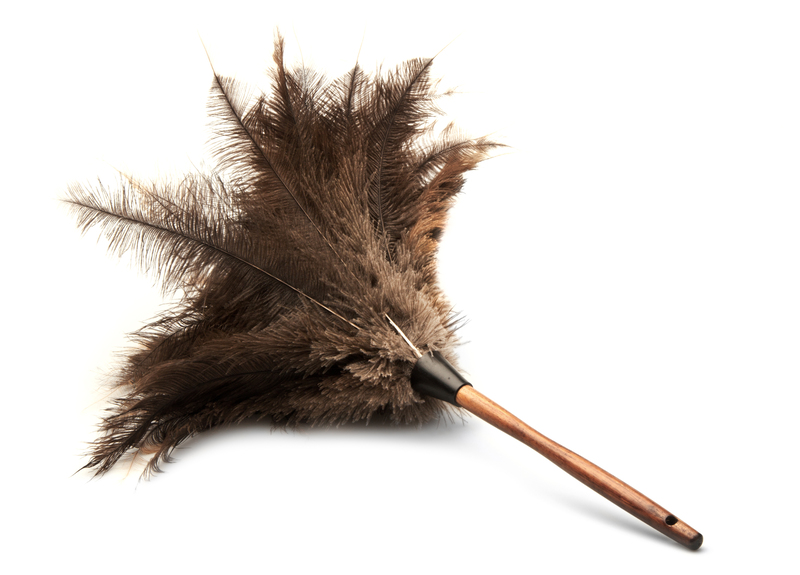Protecting your curtains and blinds from dust and pet hair
Posted on 24/07/2024
can be a never-ending battle, especially if you have furry friends or live in a dusty environment. These window treatments not only add beauty and style to your home, but also serve practical purposes such as blocking out sunlight and providing privacy. Therefore, it is important to keep them clean and prolong their lifespan. In this article, we will discuss some effective tips on how to protect your curtains and blinds from dust and pet hair.
Dust may seem harmless, but it can actually cause damage to your curtains and blinds over time. When dust accumulates on the fabric, it can create a barrier that blocks out light and air. This can lead to discoloration, deterioration of the fabric fibers, and an unpleasant musty odor.
Similarly, pet hair can also wreak havoc on your window treatments. The oils and dander from your pets' fur can get trapped in the fabric of your curtains or blinds, attracting more dust and causing them to look dirty and unkempt.
Furthermore, if you have cats or dogs that like to scratch or chew on things, they may also damage your curtains and blinds with their claws or teeth. This not only ruins the appearance of your window treatments but also creates holes or tears that compromise their functionality.
1. Regularly dust and vacuum
The best way to prevent dust build-up on your curtains and blinds is by regularly dusting them off with a microfiber cloth or using the soft brush attachment of your vacuum cleaner. This should be done at least once a week to keep them free from dust particles that can settle into the fabric fibers.
2. Use a lint roller
For stubborn pet hair that is difficult to remove with a vacuum cleaner, a lint roller can come in handy. Simply roll it over the surface of your curtains or blinds to pick up any loose hair. This will not only keep your window treatments clean but also prevent pet hair from getting embedded in the fabric.
3. Wash or dry clean as needed
Periodic washing or dry cleaning is necessary to remove any accumulated dust, pet hair, and other debris that cannot be easily removed by dusting or vacuuming. Always refer to the care instructions on the label before washing or taking your curtains and blinds to a dry cleaner.
4. Regularly groom your pets
Regular grooming of your pets can significantly reduce the amount of fur they shed, thus minimizing the amount of pet hair that ends up on your curtains and blinds. Brushing them outside can also help prevent loose hair from entering your home.
5. Train your pets
Training your pets to stay away from your window treatments can also help protect them from damage. Use positive reinforcement techniques to teach them boundaries and redirect their attention to appropriate toys or scratching posts.
Pros:
- Regular cleaning and maintenance can prolong the lifespan of your curtains and blinds.
- Protecting them from dust and pet hair can improve indoor air quality.
- Regular dusting and vacuuming can prevent allergies and respiratory issues.
- Removing pet hair can minimize unpleasant odors in your home.
Cons:
- The process of protecting curtains and blinds from dust and pet hair requires time and effort.
- Frequent washing or dry cleaning can be costly.
- It may be challenging to train pets to stay away from window treatments.
- Dust and pet hair can cause damage and discoloration to curtains and blinds over time.
- Regular cleaning, grooming of pets, and training are essential in protecting window treatments.
- Using low-cost methods such as dusting and vacuuming can effectively remove dust and pet hair.
- Periodic washing or dry cleaning is necessary for deeply embedded dust and pet hair.
Protecting your curtains and blinds from dust and pet hair is a crucial step in maintaining their beauty and functionality. By following these tips, you can prevent damage and extend the lifespan of your window treatments. Regular cleaning and maintenance not only keep them looking clean but also improve indoor air quality, making your home a healthier and more comfortable place to live in. With a little extra effort, you can enjoy stylish, clean, and pet-friendly window treatments for years to come.
Why Dust and Pet Hair are Harmful to Your Curtains and Blinds
Dust may seem harmless, but it can actually cause damage to your curtains and blinds over time. When dust accumulates on the fabric, it can create a barrier that blocks out light and air. This can lead to discoloration, deterioration of the fabric fibers, and an unpleasant musty odor.
Similarly, pet hair can also wreak havoc on your window treatments. The oils and dander from your pets' fur can get trapped in the fabric of your curtains or blinds, attracting more dust and causing them to look dirty and unkempt.
Furthermore, if you have cats or dogs that like to scratch or chew on things, they may also damage your curtains and blinds with their claws or teeth. This not only ruins the appearance of your window treatments but also creates holes or tears that compromise their functionality.

Tips for Protecting Your Curtains and Blinds
1. Regularly dust and vacuum
The best way to prevent dust build-up on your curtains and blinds is by regularly dusting them off with a microfiber cloth or using the soft brush attachment of your vacuum cleaner. This should be done at least once a week to keep them free from dust particles that can settle into the fabric fibers.
2. Use a lint roller
For stubborn pet hair that is difficult to remove with a vacuum cleaner, a lint roller can come in handy. Simply roll it over the surface of your curtains or blinds to pick up any loose hair. This will not only keep your window treatments clean but also prevent pet hair from getting embedded in the fabric.
3. Wash or dry clean as needed
Periodic washing or dry cleaning is necessary to remove any accumulated dust, pet hair, and other debris that cannot be easily removed by dusting or vacuuming. Always refer to the care instructions on the label before washing or taking your curtains and blinds to a dry cleaner.
4. Regularly groom your pets
Regular grooming of your pets can significantly reduce the amount of fur they shed, thus minimizing the amount of pet hair that ends up on your curtains and blinds. Brushing them outside can also help prevent loose hair from entering your home.
5. Train your pets
Training your pets to stay away from your window treatments can also help protect them from damage. Use positive reinforcement techniques to teach them boundaries and redirect their attention to appropriate toys or scratching posts.
The Pros and Cons
Pros:
- Regular cleaning and maintenance can prolong the lifespan of your curtains and blinds.
- Protecting them from dust and pet hair can improve indoor air quality.
- Regular dusting and vacuuming can prevent allergies and respiratory issues.
- Removing pet hair can minimize unpleasant odors in your home.
Cons:
- The process of protecting curtains and blinds from dust and pet hair requires time and effort.
- Frequent washing or dry cleaning can be costly.
- It may be challenging to train pets to stay away from window treatments.

Key Takeaways
- Dust and pet hair can cause damage and discoloration to curtains and blinds over time.
- Regular cleaning, grooming of pets, and training are essential in protecting window treatments.
- Using low-cost methods such as dusting and vacuuming can effectively remove dust and pet hair.
- Periodic washing or dry cleaning is necessary for deeply embedded dust and pet hair.
Conclusion
Protecting your curtains and blinds from dust and pet hair is a crucial step in maintaining their beauty and functionality. By following these tips, you can prevent damage and extend the lifespan of your window treatments. Regular cleaning and maintenance not only keep them looking clean but also improve indoor air quality, making your home a healthier and more comfortable place to live in. With a little extra effort, you can enjoy stylish, clean, and pet-friendly window treatments for years to come.




